Human sacrifice was practised by various cultures at various levels. We have references to sacrifice of human beings in the Vedas and Tamil literature and sculptures. In fact there is no religious book which has not got a reference to it. There is no civilization where it was not practised. Historians only talk about Mayans nowadays. But it was practised on a large scale in the Middle East. We have unusually, disproportionately large number of children graves in Bahrain. It was practised in the early dynasties of Egypt. When the pharaoh died, lot of his servants, officials, queens were buried with him. They were administered with quick acting poison or a tranquilizing drug. They all did in an orderly manner. Bible and Jewish literature refers to it a number of places.
Hindu Heroes sacrificed themselves to infuse heroism and patriotism before wars. They cut their heads by their own hands. We have sculptures depicting this scene. Hindu ladies threw themselves in husband’s pyre (called Sati) even when others stopped them. Sangam Tamil literature has a beautiful verse in Purananauru sung by the wife of Pandyan King. Bhutapandyan Devi simply ignored the requests of all the ministers and threw herself in the fire. But it was not compulsory. Even when the Pandava king Pandu died, his wife Kunti did not die by Sati. When Rama went in to the Sarayu River, thousands of his followers followed him into the river, says Ramayana. But we can see a clear dividing line between voluntary sacrifice and forced human sacrifice.
In Sri Lanka, Ravana’s sons Meghanada and Indrajit did human sacrifice in the cave of Nikhumbila according to Ramayana.
Picture shows Kalibhangan Spear Fight.
In the fig deity seal of Mohanjo- daro a human head was placed on the altar beneath the fig tree. The hair on this head is bound at the back into a double bun. This suggests that the human head on the fig deity seal belonged to a warrior.
Human Sacrifice in Mahabharata
Another type of human sacrifice is offering one’s life for the success in a war. This is first seen in Mahabharata and then in Tamil literature. Rajasthani flk literature also has got such tales. This is a self motivated sacrifice. No one puts anyone to death. Aravan also known as Irawan, son of Arjuna and Naga princess Ulupi offers his head for the success of Pandavas. This tradition is well known in South East Asia and Northern parts of Tamil Nadu. A lot of temples have Aravan’s head. In Rajathan the same story is told about Khatusyamji, also known as Barbarika (Belar Sen). In Nepal, he is known as Yalamabar. So we can conclude sacrificing one’s head for the success in war is as old as Mahabharata.
Navakandam (Nine Cuts) In Tamil Nadu
Navakandam means Nine Cuts. A heroic soldier ritually cuts himself in nine places and dies in front of Goddess Durga also known as Kotravai just before a war. He does it for the welfare and success of the king and kingdom. This was a great patriotic act. The people who have sacrificed their lives for sake of the country are honoured by the Tamils. They install statues for them and do Puja. We have got beautiful sculptures depicting this heroic deed.
Jayamkondar, author of Kalingatuparani, wrote songs about this practice of Navakandam in 9th century AD. Oldest Tamil book Tolkappiam and Manimekalai, one of the five epics, also mention it. Maravars of Tamilnadu and Nayars of Kerala practised this ritual.
Pictures of Hand Prints by women who committed Sati in Jodhpur Rajasthan & a Navakandam
Following are the places where Navakandam happened:
Thanjavur—for the success of a Choza king
Mahabalipuram fifth ratha of Kali—
Madurai Madapuram mariammn temple—Siththira sarithan & Vallabhan
Thenkarai village— Near Sholavandan
Mallal, Ilaiyangkudi—Prayer to Kali for the welfare of the king
Sathipattu near Panrutti—for ruler Athirajamangalyapuram
We have statues of the heroes in Navakandam pose.
Kundrakudi temple wall- For Durga
Mannarkottai—for the welfare of his master.
Tirupparankundram—to save the temple from invading army jumped from the tower. Strictly speaking it was not Navakandam, but a sort of ritual sacrifice.
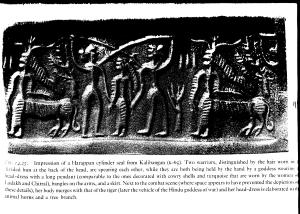
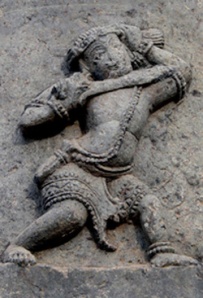
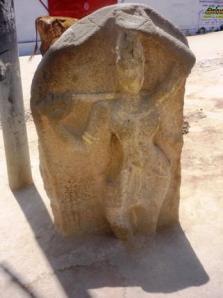
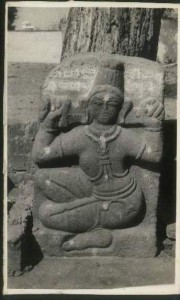

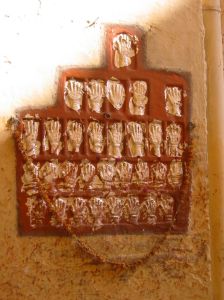

No comments:
Post a Comment